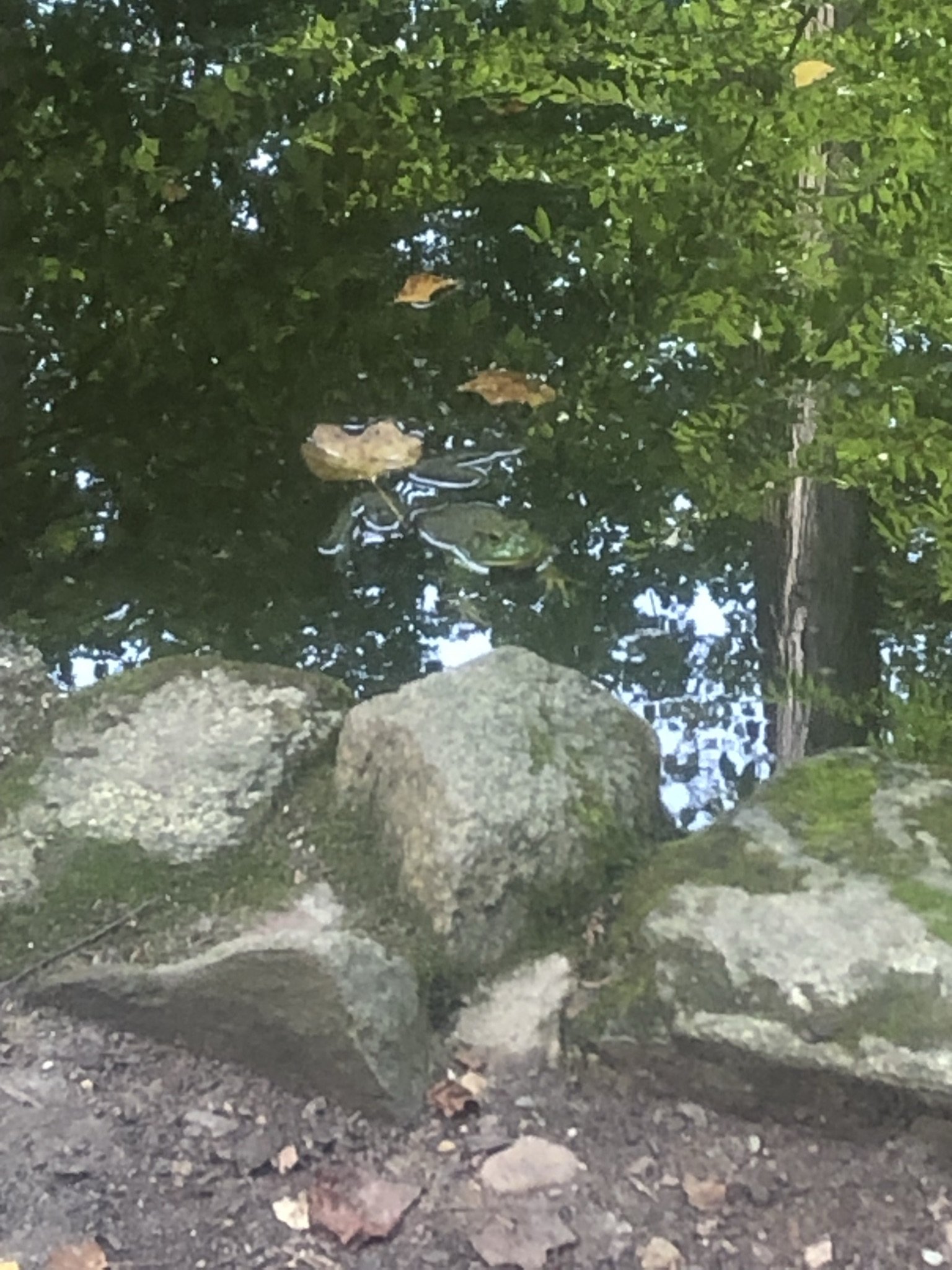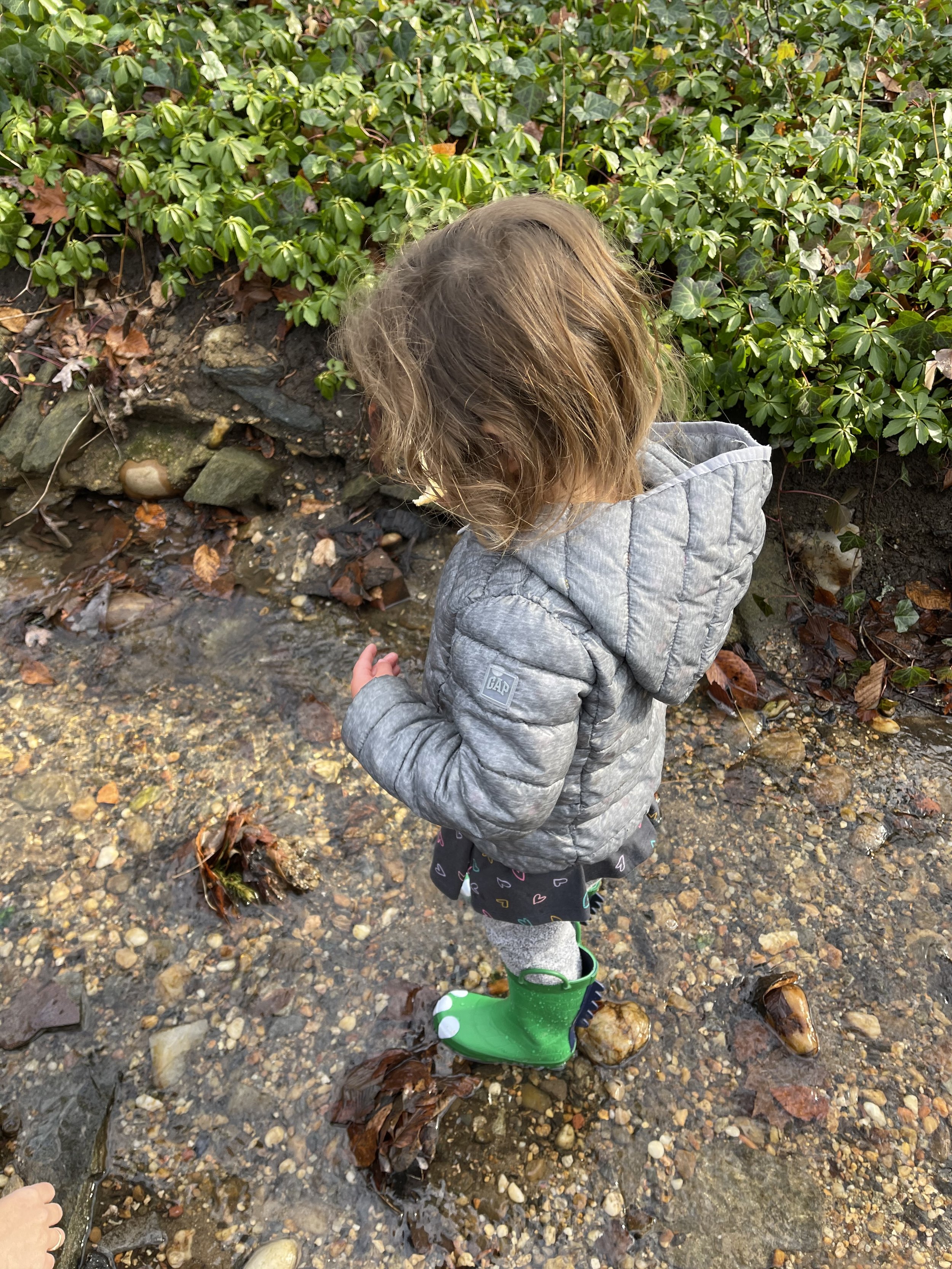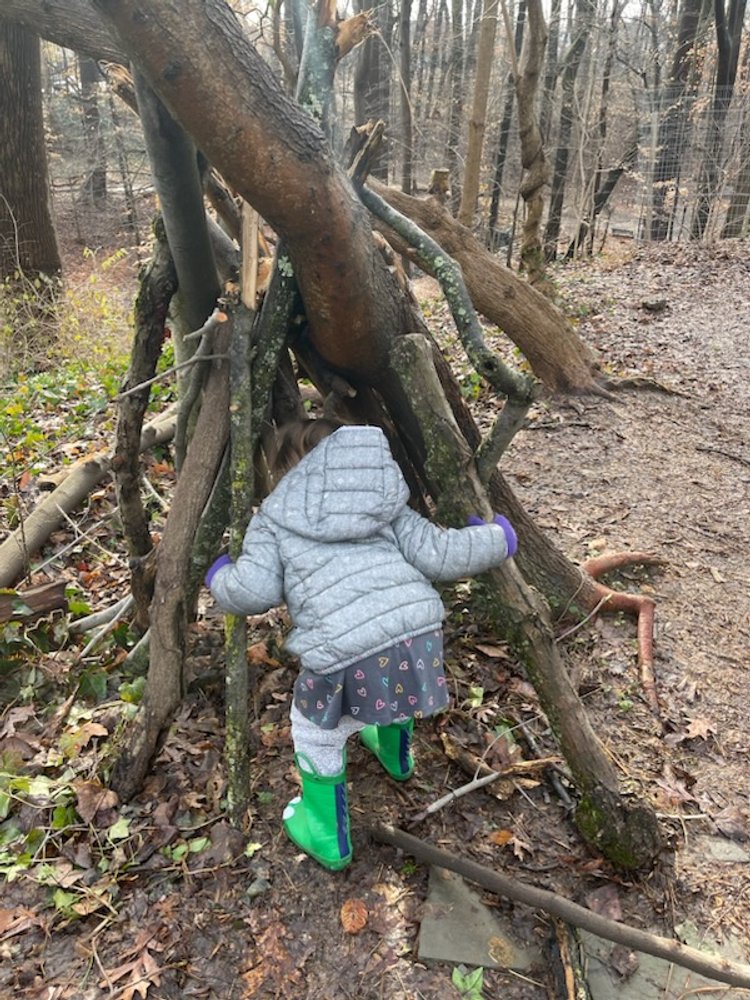Tregaron Conservancy
Tregaron Conservancy, located in the Cleveland Park neighborhood of Northwest DC is a wonderful outdoor space to explore with kids in any season. We’ve written a guide and some printables to help you get started!
-
They like to sit super still on the edge and within the pond. Can you spot them? See them swimming? From spring into early summer, it’s easy to spot tadpoles at various stages of development- just crouch at the edge and look around the submerged leaves or stones right at the edge of the pond. Soon you will see many! Make sure not to touch or disturb any of the wildlife. Later in the summer and fall, you can see frogs of various sizes. In winter, you won’t see any frogs, but they are hibernating frozen under the mud! You can’t see them but it’s fun to talk about.
Activity tip: Engage those muscles and practice jumping like a frog! Is it harder or easier than walking on 2 feet?
Discussion prompt: Have a discussion with your children about why it is important not to touch or disturb the wildlife. Put it in perspective: How would they feel if someone came and moved things in their room? How would they feel if someone interrupted them while they were playing? Also talk about how the earth is home to many and we need to share and respect each other (wildlife included!)
-
There is at least one water snake in the pond. It is not a cotton mouth or moccasin or anything poisonous, and it won’t bother you. It might eat the smaller frogs though! Most likely you will just see it sitting in some lilies.
Activity tip: See how long you can sit still and watch the snake (or watch for the snake, if you don’t see it). Can you slither like a snake?
Discussion prompt: Snakes are one of those creatures we often associate with words such as “dangerous”, “poisonous”, “scary”. Have a discussion with your child about how some snakes are harmless/not all snakes are to be feared. Maybe even look into how to identify local poisonous/dangerous snakes vs. how to identify the harmless kinds. It’s a lesson in safety but also in understanding.
-
The lilies sprout, bud, make flowers, and then have seed heads. Where are they in their life cycle during your visit?
Activity tip: Bring along a notebook and some crayons. Have your child draw a picture of the lilies if they are present!
Discussion prompt: How will the lilies look on your next visit? At different times of year? If you’re not sure, what are your guesses?
-
Sometimes water spills over the lip and flows under the bridge at the edge of the pond; sometimes there’s a little water in the spillway, but not much of a waterfall; sometimes there’s no water under the bridge at all.
Activity tip: Try to follow the water away from the pond without leaving the path. Can you follow it with only your ears? Where does it go when it leaves the pond?
Discussion prompt: Think back over the past few days; has it rained? How much? What would happen if it stopped raining forever? What would happen if it rained a huge amount?
Lily Pond
The lily pond is rewarding to visit year-round. In fact, visiting multiple times over the course of the year can be the springboard for a lot of great lessons for kids- and adults! While the highlight, of course, is the frogs- and tadpoles!- the water lilies, (harmless) water snake, and water level all fluctuate and provide opportunities for discussion.
Bridge
Engage kids in following the water from the lily pond, down under the bridge, to Klingle stream. While the path does not allow following the water closely enough to see it the whole time, a combination of logic (we saw water pouring out of the pond, then we walked down hill, then we saw water coming out of a pipe down here) and using other clues (can we hear water trickling through the trees even though we can’t see it?) can be used to piece it together.
Activity Tip: Echoes under the bridge!
Talk about what an echo is: it’s what happens when your sound waves bounce off of a hard surface- in this case, the bridge- and come back to you!
Say something loudly and then say something softly- what do the echoes sound like?
Say something under the bridge and then say somethings out in the open- what happens to the echo when you’re no longer under the bridge?
Klingle Stream
Klingle stream is slow enough and meandering enough that properly dressed kids can splash around in the stream itself! There are a variety of rocks to collect, stack, or just inspect, and areas of sand where it is possible to make small dams. Refrain from running up and down the bank, where you could cause erosion- stick to the rocky part of the stream bed.
Activity Tips:
Look for rough rocks! Smooth rocks! Long sticks! Short sticks! Deep water! Shallow water! It’s a great opportunity to practice finding and using a variety of descriptive words and even a chance to make observational comparisons.
Rainboots are great for stream walking during most seasons. Waterproof/water-resistant sandals such as Keens are great for stream walking in the summer. Just make sure that your child’s footwear has good grips on their soles!
Watching your child walk on potentially slippery surfaces can be nerve-wracking but try not to intervene unless they are in danger. Stream walking is a great opportunity to work on balance and core-engagement on uneven or unstable surfaces
East Meadow
The east meadow is a great place to continue the scavenger hunts, or general observations of nature.
Activity Tips:
The trail through the east meadow is sometimes muddy. This is a great opportunity to make footprints, and check out the footprints that are already there! Are there animal prints? What do the prints of everyone in your group look like? Can you make guesses about the other prints you see? (i.e. was it a kid? Or an adult? A dog?)
Often times when our kids get dirty we cringe. But getting dirty and exposing our children to the different textures and elements of nature is great for sensory exploration and is often fun for our kids. So yes, there may be more laundry, and bathtime might become more urgent, but it’s worth it.




